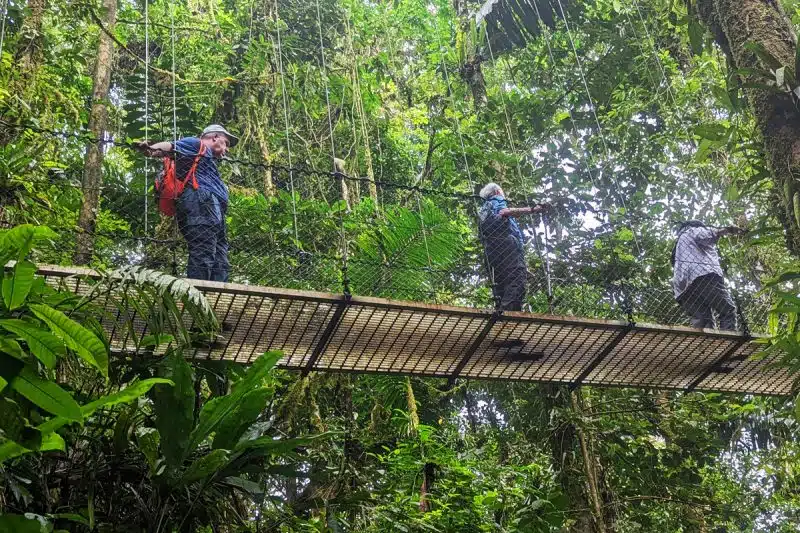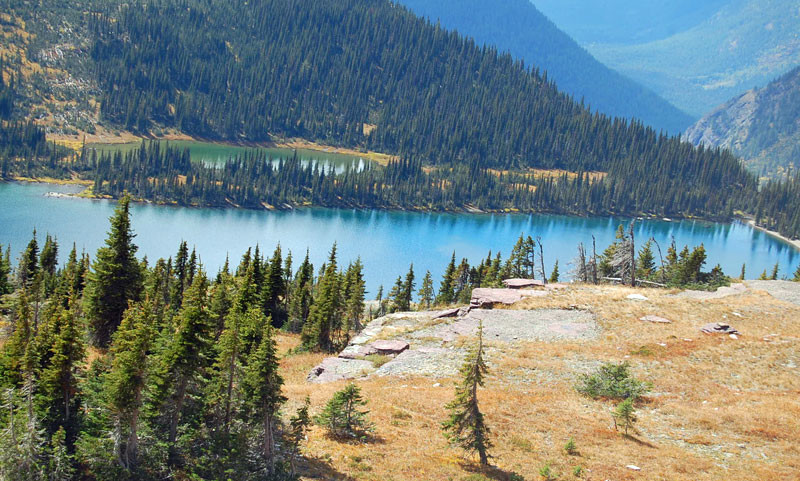
The biggest national parks in the U.S. range from the frozen tundra of the Arctic to the hottest and driest areas of the California deserts. Some are visited by millions of people a year, while others see only a few thousand guests.
I’m a major national park junkie. Though trips to big cities are fun, there’s nothing like mountains, backcountry camping, and hiking through forest surrounded by large predators.
With that in mind, it’s time to get back into national park mode and count down the largest parks in the United States by size.
There are now 63 official national parks and this list includes the biggest 30. How many can you name? You’ll probably be surprised by some of the entries on this list.
All photos were taken by Quirky Travel Guy. Yes, I’ve personally visited most of these parks!
If you’re into national parks as much as I am, I highly recommend picking up the National Geographic Guide to the Parks. It has super in-depth information, maps, and tips for every park.
The 30 Largest National Parks in the United States:
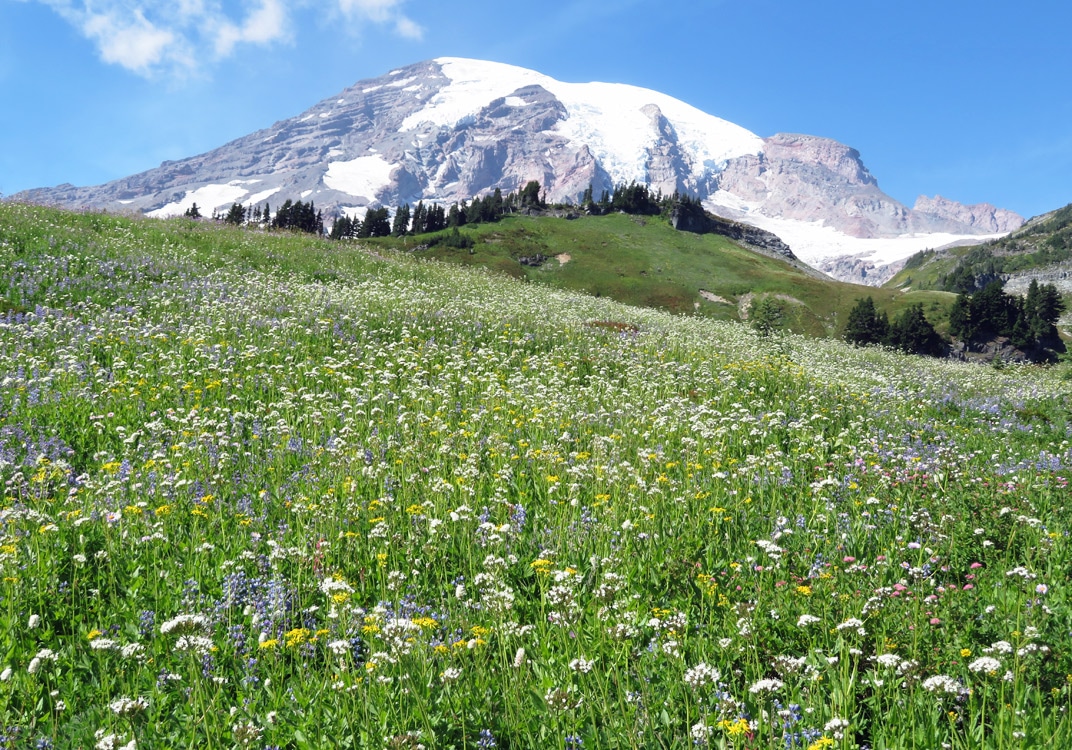
#30: Mount Rainier
State: Washington
Size: 236,381 acres
Established: March 1899
Rainier is one of the only U.S. national parks visible (on a clear day) from hundreds of miles away. That’s because of Mount Rainier, the active volcano with a 14,411 elevation that towers over its surroundings.
There’s nothing like flying into Seattle and looking out the window to see the peak at nearly the same height as the airplane!
Visitors to Rainier on the ground can choose from a ton of great summer hikes and snowshoeing in the winter.
There are a ton of waterfalls and scenic lakes to check out as well. Here’s my extensive list of things to do at Mt. Rainier.
#29: Capitol Reef
State: Utah
Size: 241,904 acres
Established: December 1971
Capital Reef NP has the same cliffs, monoliths, and canyons that many of Utah’s parks are known for. But this park is unique for a couple of reasons.
One, its oddly narrow shape – the park measures 60 miles long (north to south) but only six miles wide, on average.
Two, it has massive fruit orchards that were established by early settlers and are now operated by the NPS.
Depending on the time of year, visitors can pick cherries, apricots, peaches, or apples, and pay for them by the pound.
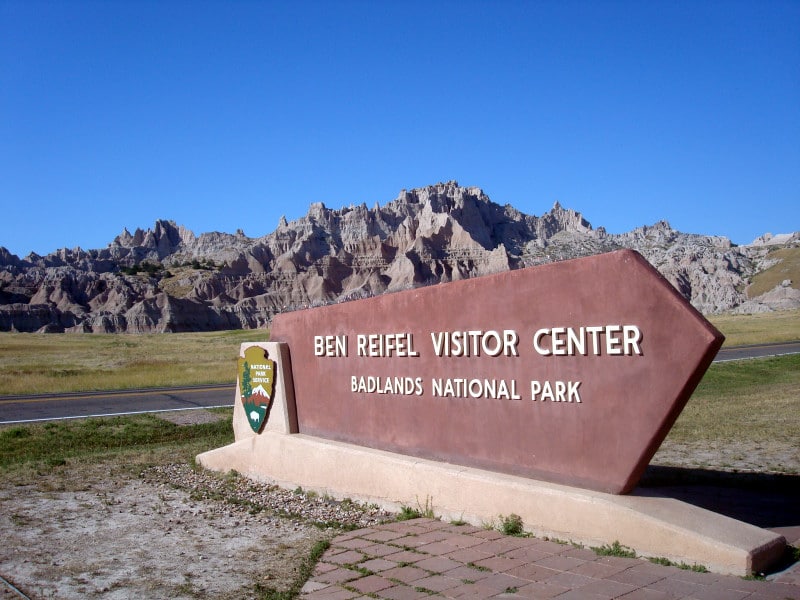
#28: Badlands
State: South Dakota
Size: 242,755 acres
Established: November 1978
Badlands NP is a unique environment home to huge sections of rock pinnacles and other sections of seemingly endless grass prairie. A great way to experience the park is by spending a couple days in one of the campgrounds.
Seeing the bison wandering the grasslands and bighorn sheep exploring the rocky hills was a very cool experience.
You’ll feel like you’re fully immersed in nature when you have to avoid piles of bison dung and prairie dog holes as you walk.
#27: Channel Islands
State: California
Size: 249,561 acres
Established: March 1980
One of the newest national parks on this list, the Channel Islands (off the California coast not far from Los Angeles) joined the park system in 1980.
Of the eight islands, five are part of the national park, serving as a protected area for the 145 animal species that are found here and nowhere else in the world, including the island scrub jay.
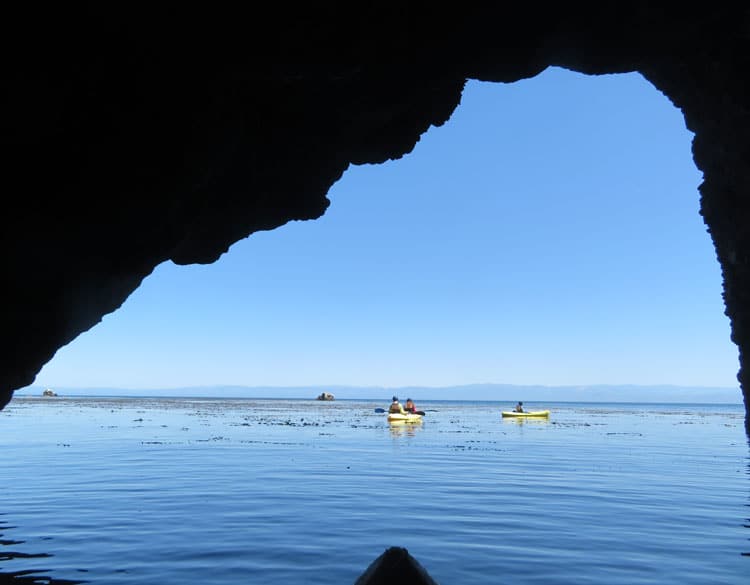
Half of the park area consists of ocean waters. In fact, engaging in kayaking and whale and dolphin watching are some of the most fun things to do on Santa Cruz Island.
I spent a few days hiking and camping here and had a blast. I highly recommend the Channel Islands!
#26: Rocky Mountain
State: Colorado
Size: 265,795 acres
Established: January 1915
Rocky Mountain National Park’s Trail Ridge Road is one of the few places in America where you can drive above 12,000 feet elevation. A full third of the park is above the tree line.

Find stunning views at places along the way, like the Forest Canyon Overlook. Bring a jacket because it gets windy up there!
The park is known for its bighorn sheep and its variety of ecosystems, from alpine meadows to forests to tundra.
#25: Grand Teton
State: Wyoming
Size: 310,044 acres
Established: February 1929
Yellowstone gets all the headlines, but many national park buffs consider the views of neighboring Grand Teton even more, shall we say, grand.
The massive Jackson Lake and the smaller Jenny Lake are both popular spots for hiking, picnicking, and viewing the impressive peaks.
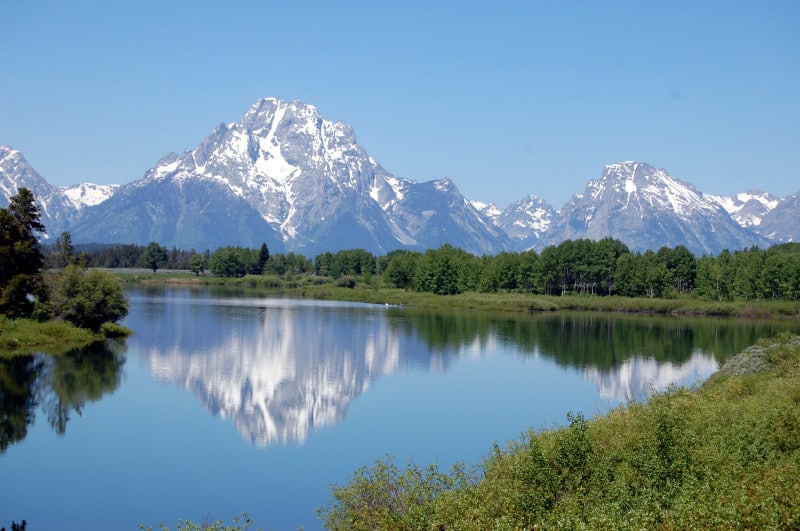
Grand Teton has all of the amazing wildlife that Yellowstone does – grizzlies, elk, bison, bighorn sheep, and wolves – with smaller crowds.
#24: Hawaii Volcanoes
State: Hawaii
Size: 323,431 acres
Established: August 1916
Only one park on this list offers the chance to watch active lava flows. Hawaii Volcanoes NP has so much to see, including Kilauea Caldera, which has been constantly erupting since 1983. Guests can approach within a mile to see the glow of lava at night.
Other highlights include Holei Sea Arch, Pu’u Loa Petroglyph Fields, and Alanui Kahiko, a former main road through the park that got buried by lava in 1972.
You can walk right to the spot where the hardened lava meets the road and take a selfie.

#23: Canyonlands
State: Utah
Size: 337,597 acres
Established: September 1964
Of Utah’s five fabled parks, Canyonlands is the largest in area, but it draws the fewest people, with roughly 700,000 annual visitors.
The Colorado and Green Rivers run through the middle of the park and split it into three distinct sections.
Each section has its own entrance, and they must be visited separately, as no roads connect them. A big draw is the park’s geology, which features canyons, arches, buttes, and spires.
#22: Sequoia
State: California
Size: 404,062 acres
Established: September 1890
Sequoia and Kings Canyon National Parks border each other in the Sierra Nevada region of California, and they also border each other on this list, ranking as #22 and #21 largest national parks in the United States.
Sequoia was founded first, back in 1890, and is known for its namesake giant sequoias, including “General Sherman,” which stands 274 feet tall to rank as the world’s tallest recorded sequoia tree.
#21: Kings Canyon
State: California
Size: 461,901 acres
Established: March 1940
Carved by ancient glaciers, Kings Canyon National Park contains deep valleys, several 14,000-foot peaks, and a whole lot of unexplored wilderness.
Its splendor was noticed by famed naturalist John Muir, who once called the park “a rival to Yosemite.” Because of the mountainous terrain, only a handful of roads exist in the park, and none cross the entire park from east to west.

#20: North Cascades
State: Washington
Size: 504,781 acres
Established: October 1968
North Cascades is a mountainous park in northern Washington featuring a handful of peaks above 9,000 feet and several glaciers, though not nearly as many as there used to be.
North Cascades borders Chilliwack Lake and Skagit Valley Provincial Parks in British Columbia, Canada.
There are some gorgeous mountains and lakes here. You’ll want to visit during the summer (perhaps as part of a Washington state road trip!), because the main roads are often closed due to heavy snowfall in the winter.
Snow can fall as early as October on some of the high-elevation mountain hikes.
#19: Great Smoky Mountains
States: Tennessee, North Carolina
Size: 521,490 acres
Established: June 1934
Many people aren’t aware that the Smokies are the most-visited national park in the United States.

With over 800 miles of hiking trails, including 70 miles of the Appalachian Trail, it’s easy to see why visitors flock to the Smokies.
The park is 95% forest and offers some great hiking and camping areas. It also some some very quirky towns nearbym like Pigeon Forge and Gatlinburg.
#18: Isle Royale
State: Michigan
Size: 571,790 acres
Established: March 1931
Way on the upper tip of Michigan, out into lake Superior, sits Isle Royale, a 45-mile-long island with no permanent residents and no roads.
Isle Royale and about 400 other smaller islands make up the national park, which is only accessible by boat or seaplane.
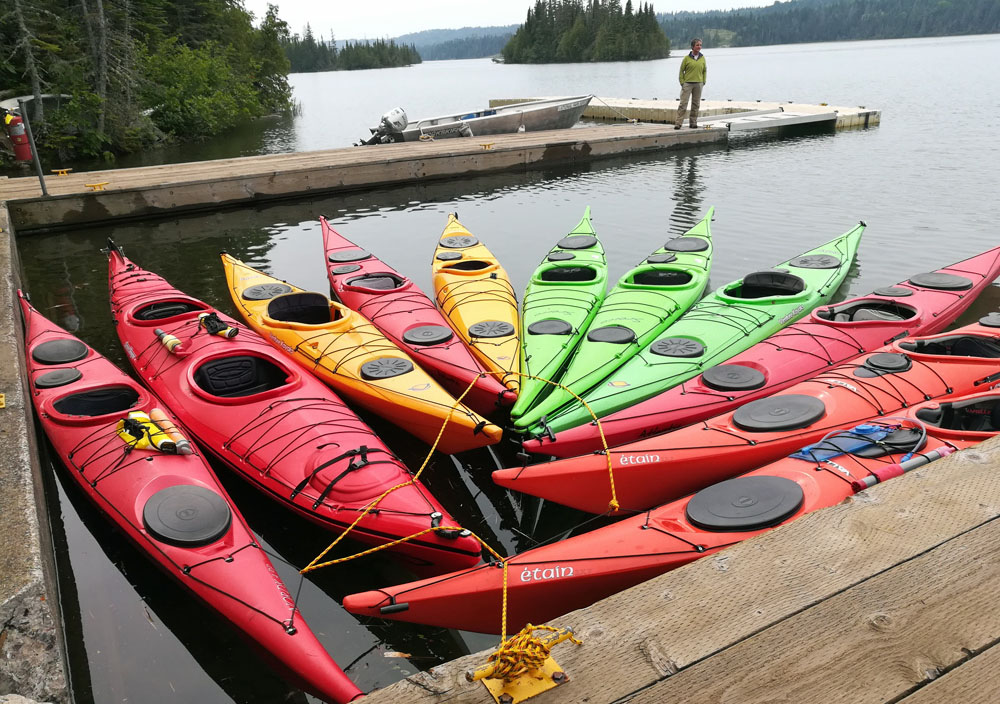
Its remoteness results in a serene environment where moose live without human interference. Wolves lived here too, but eventually, they had almost completely disappeared.
The park offers hiking and camping, and is closed from November to mid-April.
#17: Kenai Fjords
State: Alaska
Size: 669,983 acres
Established: December 1980
Kenai Fjords is a prime spot for a glacier- and whale-watching cruise, where you may see killer and humpback whales, sea lions, and porpoises.
Though most of the park requires boat travel to reach, the park can be accessed by trails from the Exit Glacier off the Seward Highway.
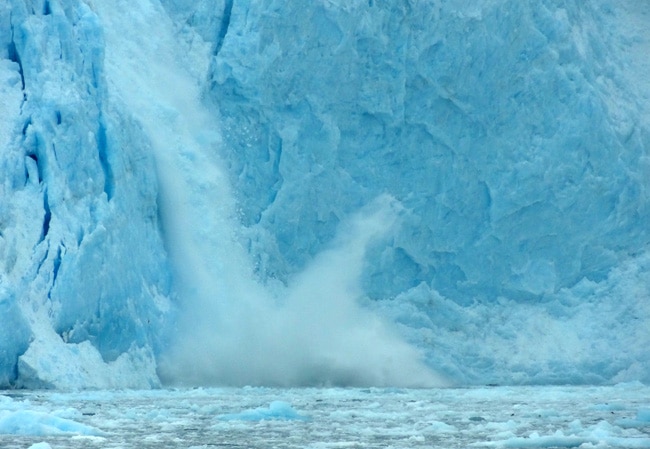
That makes it one of only three Alaskan national parks that can be reached by road. Add it to your Alaska road trip itinerary!
#16: Yosemite
State: California
Size: 761,266 acres
Established: October 1890
Yosemite is one of the most well-known parks in America, thanks to its waterfalls, giant sequoias, and scenic biking and camping areas.
The California park is known for its iconic sights, like Half Dome, Tunnel View, El Capitan, Yosemite Falls, and Bridalveil Falls.
Wildlife includes foxes, deer, cougars and small mammals. If you plan to visit, be aware of bear safety, since the black bears can aggressively seek food and may even break into cars.
#15: Joshua Tree
State: California
Size: 789,745 acres
Established: October 1994
A national park dedicated to a single tree? That’s pretty much the case in the desert of southeastern California.

Many of the park’s annual visitors are no doubt drawn by the musical significance of the park, due to U2’s classic 1987 album The Joshua Tree.
You can bike or rock climb in the park. I highly recommend exploring the Jumbo Rocks section of the park and hiking to Wonderland Ranch.
Be careful of snakes and bring plenty of water. If you’re really motivated, you can see many of the park’s highlights in a single day.
#14: Big Bend
State: Texas
Size: 801,163 acres
Established: June 1944
Despite being the 14th-largest national park by size, Big Bend is among the 20 least-visited national parks in the U.S. That’s mainly because it is so remote.
The southern Texas park borders Mexico and is a 4.5-hour drive from the nearest large city, El Paso.

With a daunting desert and mountain landscape, it’s somewhat understandable that only the most dedicated national park fans make the trip. But Big Bend’s biggest fans sing the praises of its desert landscapes and mountain hikes.
I found Big Bend to be very underrated, thanks to its awesome hiking opportunities. You can hike right down to the Rio Grande on the Mexican border!
#13: Olympic
State: Washington
Size: 922,651 acres
Established: June 1938
Olympic National Park provides more different types of ecosystems than most national parks: sub-alpine, coastal, lowland forest and temperate rainforest.
From campgrounds along the Pacific Ocean to glaciers high in the mountains, this is one of the most geographically diverse parks in the U.S. And it’s one of the best places in Washington state to see whales from shore!
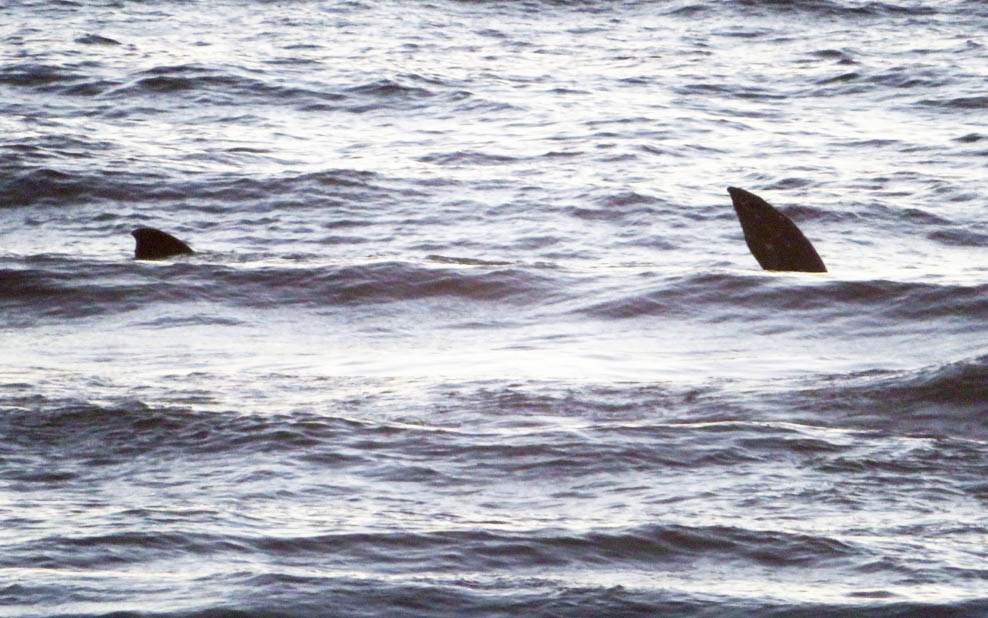
Olympic NP is probably the best place in the U.S. to truly experience the rainforest environment.
#12: Glacier
State: Montana
Size: 1,013,572 acres
Established: May 1910
Gorgeous hiking and camping sights can be found in Montana’s Glacier National Park, which still has more than a dozen active glaciers.
Three-quarters of the glacial ice in the park has melted over the past 100 years or so, and it’s estimated that many of the glaciers could be gone as soon as 2030, so make your plans to visit sooner rather than later.
Give yourself a bare minimum of 3 days to explore Hidden Lake, hike to Grinnell Glacier, and kayak near Many Glacier.
Keep an eye out for mountain goats, and have your camera ready as you travel on the famous Going to the Sun Road.
#11: Grand Canyon
State: Arizona
Size: 1,217,403 acres
Established: February 1919
Not much needs to be said about the Grand Canyon, one of the most popular tourist destinations in the country. Besides enjoying the incredible views, those up for a challenge can hike down into the Canyon.
President Theodore Roosevelt said it best in 1903: “The Grand Canyon fills me with awe. It is beyond comparison—beyond description; absolutely unparalleled throughout the wide world.”
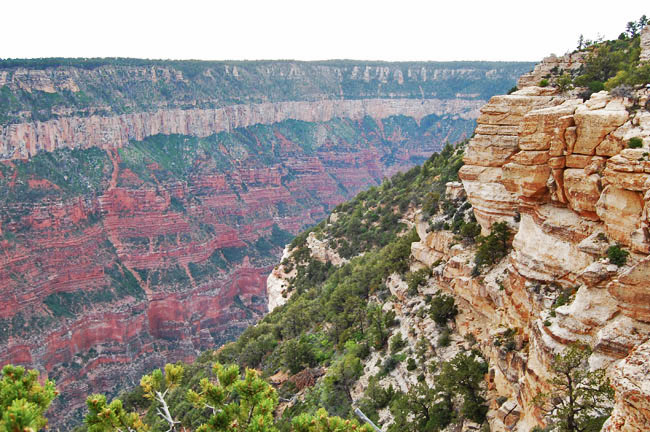
I will never forget my experience at the Grand Canyon seeing a rare California condor up close!
#10: Everglades
State: Florida
Size: 1,508,537 acres
Established: May 1934
We’ve now reached the Top 10 largest national parks in the U.S. with the famous Everglades in south Florida. More than half of the Everglades’ 1.5 million acres are water or swamp.
Only a couple of roads go into the park, but those that do will allow you to get up close and personal with alligators.
The national park protects a number of threatened species as well as the fragile Everglades environment itself.
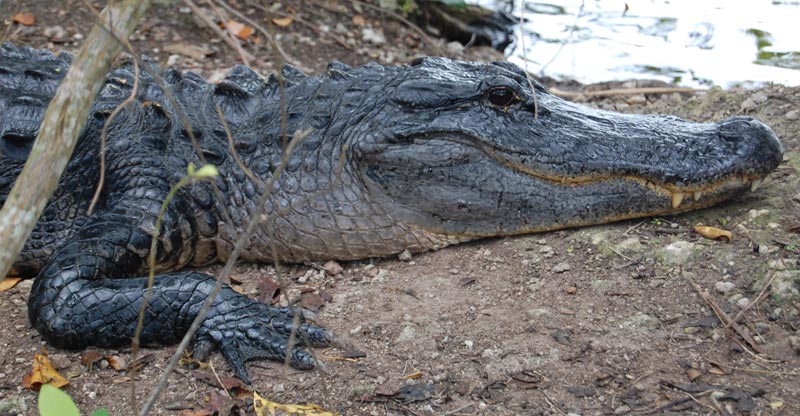
#9: Kobuk Valley
State: Alaska
Size: 1,750,716 acres
Established: December 1980
On December 2, 1980, seven new national parks were created in Alaska, adding 43 million acres of land to the NPS system.
Located in remote northwestern Alaska, Kobuk Valley offers caribou and sand dunes to those who make the trek.

It’s one of the least-visited U.S. national parks, with an average of less than 10,000 annual visitors over the past five years.
The only way to get here is by river paddling, or by bush plane. That explains why so few make the journey.
But hiking through 20,000 acres of sand dunes is a unique opportunity! I was fortunate to come here last summer to camp in the sand dunes.
#8: Yellowstone
States: Montana, Wyoming, Idaho
Size: 2,219,791 acres
Established: March 1872
The first national park in the world, Yellowstone attracts more than 3 million guests every year, eager to see the Old Faithful geyser, the throngs of bison, and the rest of the abundant wildlife, which includes black and grizzly bears, wolves, bighorn sheep, pronghorn, elk and more.
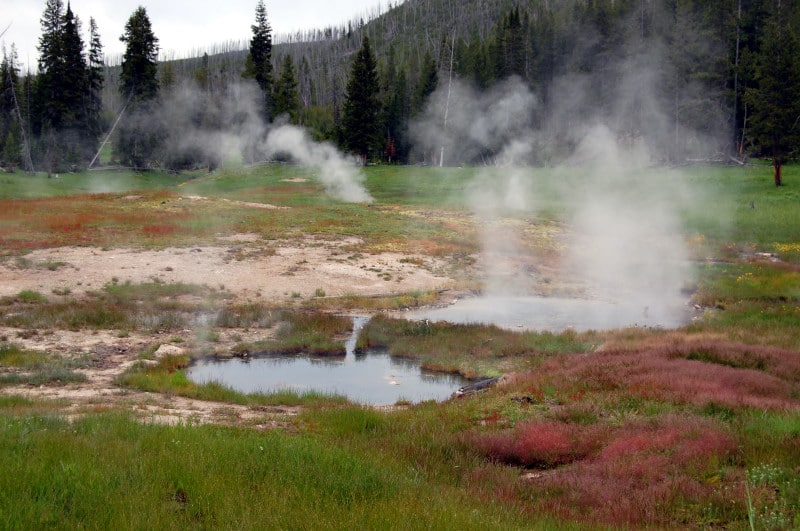
Yellowstone is a national treasure, which is why it’s one of the most popular parks on the planet.
Its location in Wyoming may seem a bit out of the way, but the many folks who drive cross-country on Route 20 actually pass right through Yellowstone!
#7: Lake Clark
State: Alaska
Size: 2,619,733 acres
Established: December 1980
Looking for solitude and seclusion? Last year, Lake Clark National Park only saw about 15,000 visitors to its 2.6 million acres, making it one of the least-visited parks in the country.
The park is located not far from Kenai Fjords in southern Alaska and is only accessible by plane or boat.
What’s here? Three mountain ranges, extensive wildlife, and a pair of active volcanoes. Plus some great bear-watching, as brown bears are abundant here. You can often see them digging up clams on the beach.
#6: Glacier Bay
State: Alaska
Size: 3,224,840 acres
Established: December 1980
Glacier Bay is a popular cruise destination for those traveling through Alaska’s inside passage near Juneau. Ice and glaciers abound, as do whales, dolphins and bears.

Seeing Margerie Glacier, a 21-mile long tidewater glacier near the Canadian border, as it meets the bay, is a powerful experience.
Though many see the park solely by boat, wilderness activities and ranger tours are available. Folks cruising to Alaska from Seattle or Vancouver usually stop in Glacier Bay.
#5: Death Valley
States: California, Nevada
Size: 3,372,402 acres
Established: October 1994
Many people are surprised to learn that Death Valley is the largest national park in the continental U.S.
Another surprise: While the park is home to Badwater Basin, the lowest point in the nation at 282 feet below sea level, nearby is Telescope Peak, which boasts an elevation of more than 11,000 feet.

Temperatures in the park range from more than 120 degrees in the desert to below freezing in the mountains.
You’ll find a surprising number of Death Valley activities, including scenic drives, hikes, camping, and even seeking out Star Wars filming locations.
#4: Katmai
State: Alaska
Size: 3,674,530 acres
Established: December 1980
The four biggest national parks are all found in Alaska, starting with Katmai, a nearly 4-million acre park in the southern part of the state, just south of Lake Clark National Park.

Many visitors here come to Brooks Falls to the bear-viewing platforms, where they can watch 2,000 brown bears feed on salmon. (Watch a live Brooks Falls webcam right now!)
Katmai is also home to the Valley of Ten Thousand Smokes, a massive area of ash and pumice that remains from the world’s most powerful volcano eruption of the 20th century, when Novarupta exploded in 1912.
#3: Denali
State: Alaska
Size: 4,740,912 acres
Established: December 1980
Most nature lovers who visit Alaska end up at Denali, one of the most-popular national parks in the state.
It’s an easy 250-mile ride from Anchorage and offers incredible wildlife viewing opportunities, whether you’re seeking grizzly bears, moose, elk, bighorn sheep, or caribou. I saw them all during my visit!
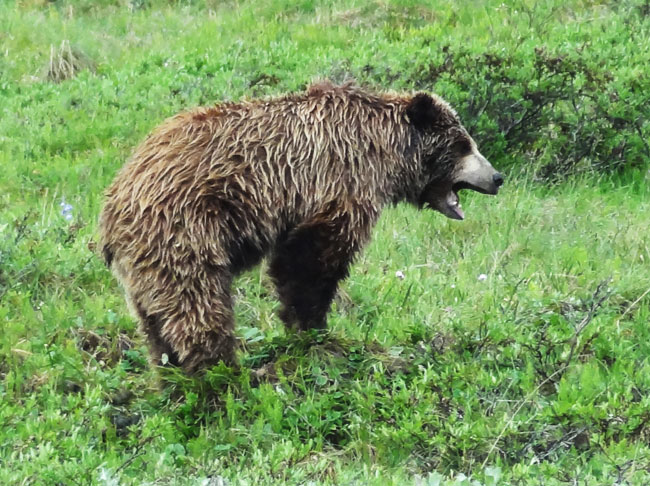
Denali National Park also provides an opportunity to see Mt. Denali (formerly known as McKinley.) That’s the highest peak in North America at 20,320 feet.
#2: Gates of the Arctic
State: Alaska
Size: 7,523,898 acres
Established: December 1980
Only about 10,000 people make it to Gates of the Arctic each year. As its names implies, the park sits entirely inside the Arctic Circle, making it the most northerly national park (along with its neighbor, Kobuk Valley.)

The park does not have a single visitor center, road or campground, though you can reach it by taking a five-mile hike from the Dalton Highway.
As with most Alaska parks, the draw is wildlife, seclusion and mountainous scenery. You’re truly on your own here, far from the rest of civilization.
#1: Wrangell-St. Elias
State: Alaska
Size: 8,323,148 acres
Established: December 1980
Give yourself a big pat on the back if you knew that Wrangell-St. Elias was the largest national park in the United States. Seriously, stop reading and pat yourself on the back for being the king and/or queen of obscure national park trivia!
Wrangell-St. Elias occupies more than 8 million acres along the Canadian border.

Unlike many Alaskan national parks, Wrangell-St. Elias is accessible by vehicle. But most of its roads are gravel, so don’t try to bring a rental car into the interior of the park.
In addition to wildlife and huge peaks, the park is known for Kennecott, an abandoned mining town that attracts plenty of tourists.
Not many people make it all the way up here. But if you’re a true national park enthusiast, you’ll want to add Wrangell-St. Elias to your bucket list!
Want to experience some of these from your own couch? Check out our extensive list of national park webcams available for your viewing pleasure.
And if you’re a fellow solo traveler, see our list of the top parks for solo travelers!
That concludes our rundown of the biggest national parks by size. Which of these large national parks would you most like to visit?
*Data on annual visitors courtesy of the NPS.
SEE MORE NATIONAL PARKS ARTICLES
Everything You Need to Know About Camping at Florida’s Remote Dry Tortugas National Park
9 Things You Didn’t Know About the Grand Canyon
Welcome to America’s Most Underrated National Park: Black Canyon of the Gunnison
The world’s Longest Cave System: Inside the Wild World of Mammoth Cave National Park


